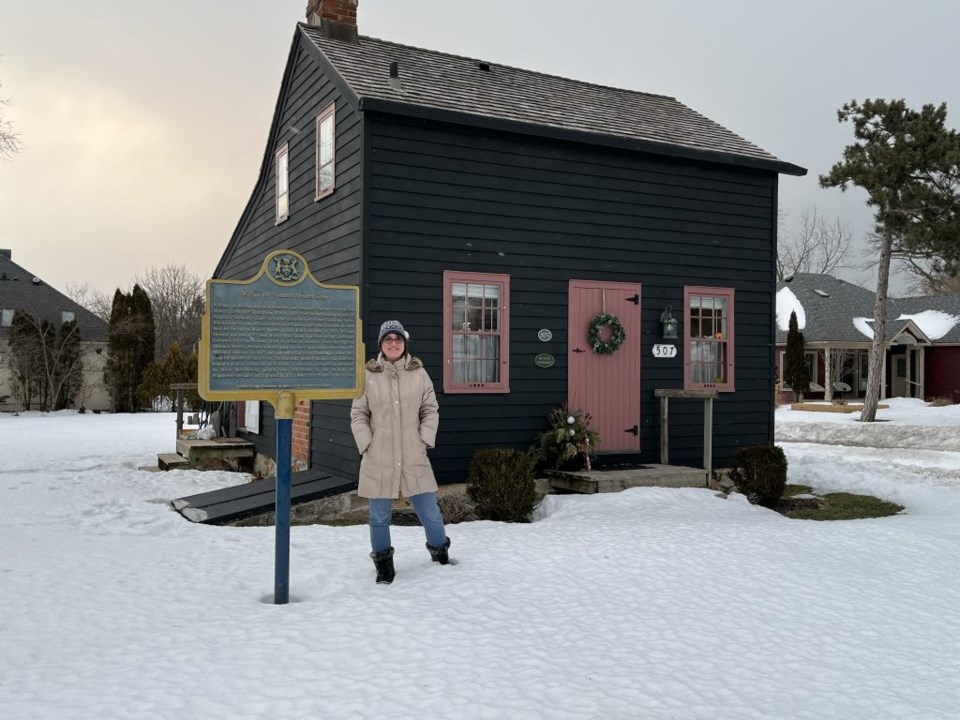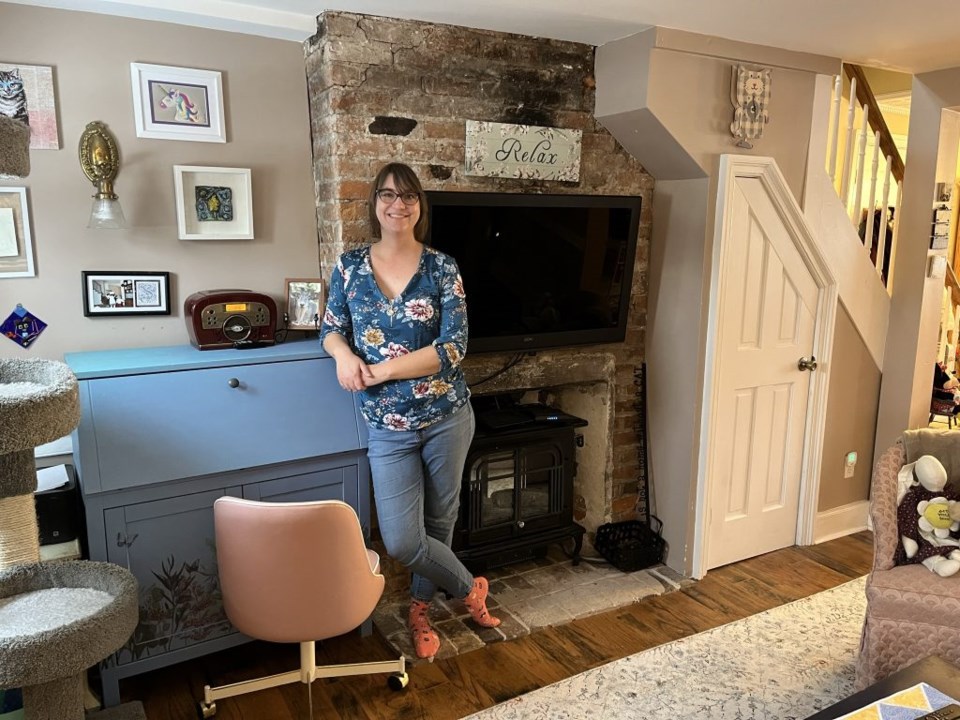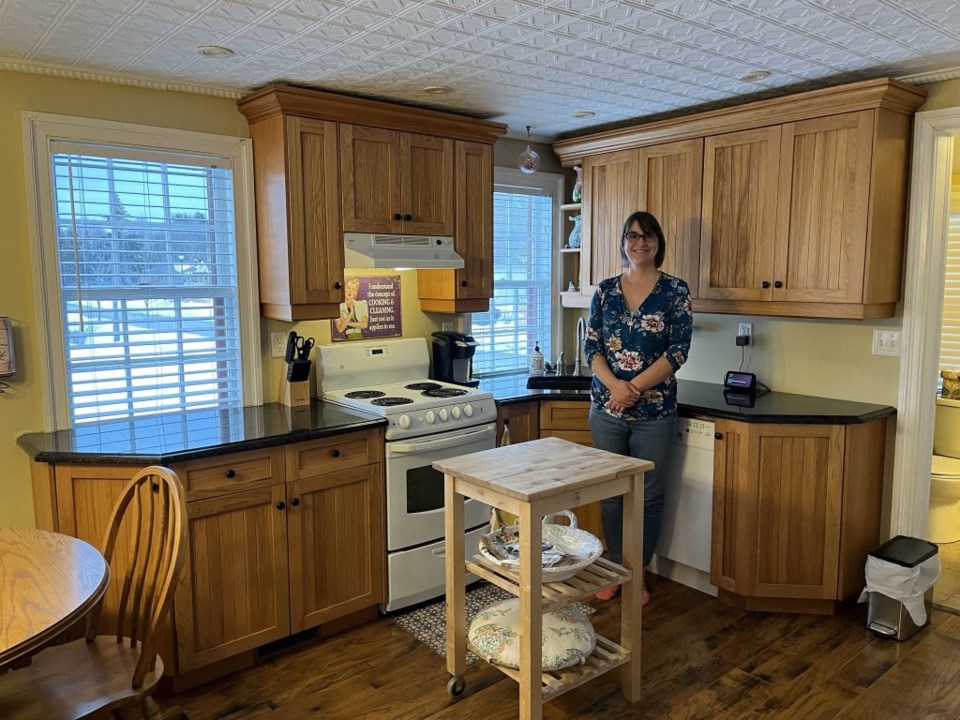
The moment she visited the tiny house at 507 Butler Street, Elizabeth Pilzecker knew she wanted to live there.
“I couldn’t believe I actually had the chance to live in history,” she says of the William and Susannah Steward (also known as Stewart) House. “History was my major at the University of Waterloo. And I actually focused a lot on the civil rights movement of the 20th century. When I learned about the house’s history, I signed the lease within a week.”
The heritage house is part of the Voice of Freedom Black History walking tour of Niagara-on-the-Lake. It’s one of 13 stops on the tour that includes Fort Mississauga and Queen’s Royal Park.
William Steward was an African American teamster and carpenter. He and his wife Susannah bought the lot on the corner of John and Butler Streets in 1834. By the middle of that decade, Niagara’s Black community was about 400 strong, and they owned about 10 per cent of the lots in the town.
The Steward home was part of what became known as Niagara’s “coloured village,” a community of former Canadian slaves, Black Loyalists and African American refugees. The majority of the Black families lived south of William Street between Regent and Simcoe Streets.
The couple cleared the land, planted crops and built a small house. A barn was also constructed on the site, and most likely housed a cow that the Stewards kept, though there is some speculation that the barn may have already existed on the property when they acquired it.
Being a history major, Pilzecker threw herself into researching more of the history of the home and its previous occupants.
“I couldn’t just live in the house and not know why it’s here, and why it was important,” she says. “I felt it was my duty to learn its history.”
And she’s also picked up a lot from tour guides who have brought people onto the property in the six years that she has lived there.
According to Pilzecker’s research, William Steward was already a freed man in the U.S. because of the fact that he was educated and could read and write.
“He was an affluent person of colour,” she says. “And his wife, from what I know, did some hairdressing on the side as well.”
In 1837, Kentucky fugitive Solomon Moseby was facing extradition back to the U.S. on a charge of stealing a horse from his former enslaver. The Stewards were among the 17 local Blacks who signed a petition asking Lieutenant Governor Sir Francis Bond Head to refuse to extradite Moseby, who was subsequently rescued from the Niagara jail by more than 200 African Canadians. The Moseby riot left two Black men dead.
The Stewards sold part of their lot to Robert Baxter, another local Black resident, and eventually in 1847 they moved to Galt, which is now part of Cambridge. The “coloured village” continued to be a strong community, but as families grew older and children became educated, many of the Black families moved to other more affluent areas of the town.
The Niagara Foundation, whose mandate is to preserve and promote the history, traditions and culture of the Niagara area, especially its historical buildings, purchased the Steward House in 1999 from the estate of well-known activist and Newark Neighbours founder Peggy Anderson, for whom Anderson Lane is named.
Foundation board member Richard Merritt says there were rumours the property had been earmarked by a developer.
“It was in a very bad state of repair,” Merritt says. “There had been a couple of additions put on, including a porch. When the restoration began we found that the foundation had to be rebuilt. The house was jacked up to restore the original foundation, and all the utilities were moved into the basement.”
The restoration took several years. Some original architectural detail remained, but vandalism claimed some of those, including the original front door.
Once the restoration was completed, the question of what to do with it remained. Options included converting it into a small Black history museum or turning it into an interpretive centre.
Wilma Morrison, long-known as the guardian of Niagara’s Black history, was called in to provide some insight. For a time, bus tours would make the Steward House a frequent stop, but it became evident that the large vehicles were disruptive to the neighbourhood.
As well, there were costs involved related to the Niagara Parks Commission that prohibited its continuation as an interpretive centre. And the museum option also turned out to be too expensive, as it required staffing.
Merritt says at one point the Niagara Foundation considered severing part of the lot for sale to make one of those options more feasible, but that was not permitted. They also applied to the Ontario Heritage Foundation to inquire if they were interested in acquiring the property, but they didn’t have the funds.
Reluctantly, it went on the market in 2009, and was purchased by current owner Bruce Harvey, who at the time was
involved with the Niagara Foundation.
Harvey and his wife Janis had previously renovated three other historic homes, either by making the interiors more liveable to today’s standards or constructing additions for added space. They had worked with renowned heritage architect Peter Stokes on one of those projects.
“There wasn’t a lot left of the original interior of the house, other than the fireplace,” Harvey tells The Local. “There was no insulation. The restoration had installed new joists, and new flooring. The staircase was original to the house, but it wasn’t safe and had to be replaced.”
Harvey says he had no historical photos or documents that would provide them guidance on ensuring the interior was more period-accurate.
Bruce and Janis did a great job of creating a liveable space that honours the Steward House’s history. The dark hardwood floors look suitably rustic, and the kitchen features Shaker-style cabinetry, though those are framed by a granite countertop. A beautiful tin ceiling caps off that room, and Pilzecker also points to the antique lighting fixtures which enhance the historic feel of the 800 square foot residence.
The new narrow staircase leads up to the small loft bedroom, with a half-bathroom on the second floor. And there was no attempt to make a new entrance into the basement from inside the home. That can only be accessed by bulkhead doors located next to the side entrance.
Pilzecker, a volunteer with NOTL Cat Rescue, currently shares the Steward House with a bunny named BunBun and three cats. The question often comes up about the possibility that such an important, historic home might be haunted, she says.
“I ended up working for a week in Oakville, and my mom stayed here to look after my cats,” says Pilzecker. “A couple of weeks later, I told her that when I was in my house, it felt like someone was trying to talk to me. She said ‘your house is so haunted, and they’re having a party.’”
Subsequently, she connected with an Indigenous woman who offered to assess the house for spirits.
“She came in and smudged the house,” Pilzecker recalls. “She said I had about 13 ghosts upstairs, and that they told her they help me clean. She said they were buried out the back, and they were Christian. And she added that in the basement you can hear them singing freedom songs.”
Pilzecker speculates that the Stewards may have harboured freedom seekers, though there is no documentation that she can find to support that speculation. Despite the possible presence of ghosts, Pilzecker says the house actually gives off a warm, loving feeling.
Besides the spirits there are other challenges to renting the Steward House, especially with its historic plaque out front explaining its significance.
Though the bus tours long ago stopped parking on the street (confirmed, by the way, by Rochelle Bush, who runs Tubman Tours Canada out of St. Catharines, who would love to take her bus tours to the site), Pilzecker often finds her solitude interrupted by tourists and curious newcomers to town.
“I was told right away to put up a ‘Private Residence’ sign because people do try to enter the front door,” Pilzecker laughs. “Once, a person who didn’t speak English walked right into the house. He kept saying ‘Mein Haus’ and pointing to a brochure, and then to me. When
he realized what he had done, he ran out embarrassed.”
She also installed privacy curtains early on.
“Within the first week of moving in,” she adds, “I was sitting on the couch one Saturday and I saw a couple outside. I heard one of them say ‘the blinds are open’. They walked right up and started peeking into the windows. I just waved at them as they pressed their noses against the glass.”
She says there is a tour guide named Kevin from Buffalo’s Motherland Connextions who brings visitors as part of his Underground Railroad tour.
“I haven’t seen him since COVID, but I would always let them in the house,” Pilzecker says. “He always talked about everything, and I always waved to him. And one day my house had just been cleaned, so I invited them in. He tells the story of the Moseby affair, and he seems to be so knowledgeable.”
Merritt, who has not visited the property in some time, is pleased to hear that someone like Pilzecker, who appreciates the property’s significance, is the current steward of the Steward House.
“I was going over the minutes of our meetings from that time, and we really agonized over the decision to sell it,” Merritt says. “But it was the right thing at the time. With the Voices of Freedom Park now, and the fact that there’s become much more interest in Niagara’s Black history, maybe it will survive as a historic landmark for generations to come.”


